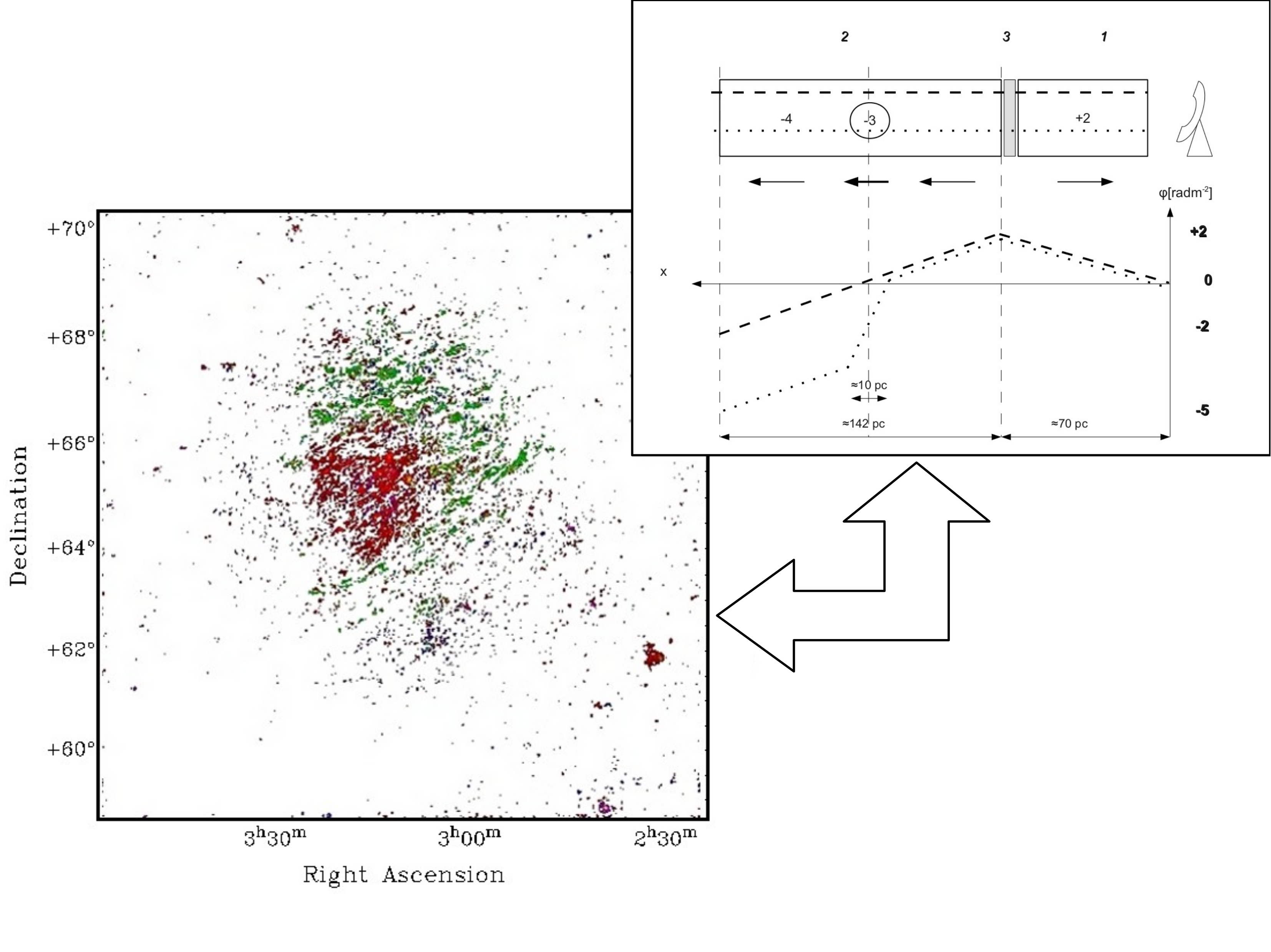Daily Image
17-01-2013The structured magneto-ionic medium toward the Fan region: unveiling nearby screens and bubbles by RM-synthesis
| Submitter: | Marco Iacobelli |
| Description: | Low frequency polarimetric observations of the Galaxy provide insight into the ionized interstellar medium (ISM) and the Galactic magnetic field and detect magnetized objects in the ISM that are not detectable by any other means. The FAN region is a highly polarized, extended region in the second Galactic quadrant at low Galactic latitudes. Rotation measure synthesis (RM-synthesis) technique on WSRT radio polarization data at about 2 m wavelength was used to image this region in the sky revealing a complex and structured distribution of polarized signals due to the Galactic synchrotron emission foreground. In a recent analysis we separate the polarized signals into three distinct components, named the "curtain", the "ring" and the "bubble", respectively. The composite colour coded image displays the polarized intensity (PI) emission clipped at 3 sigma level at three main Faraday depth ranges. Red, Green and Blue (depicting the "bubble", "ring" and "curtain" components) is averaged PI over a Faraday depth range of [-13,-5], [-4,-1] and [0,+5] rad/m2, respectively. The low Faraday depth values of all components suggest nearby locations of the emission. The structure called the "curtain" likely corresponds to enhanced synchrotron emission due to compressed magnetic fields in the Local Bubble wall. The second "ring" component is located just behind the Local Bubble. It is expected to be spatially extended and Faraday-thick, and therefore only partially detected in these data. The third component (the "bubble") is located within the extended "ring". The Faraday depth of the "bubble" in combination with its non-detection in H-alpha emission indicates that it cannot be created by density enhancement alone, but needs to have enhanced magnetic field strength as well, contrary to earlier detected regular polarization structures. If fainter and Faraday thin structures lie along the line of sight toward the Fan region, this will be seen by deeper low frequency observations. Next generation low-frequency arrays such as LOFAR will sensitively probe weak magnetic fields with low Faraday depths, which may reveal more ("bubble"-like) magnetized objects. The study is published in the scientific journal Astronomy & Astrophysics as Iacobelli, Haverkorn and Katgert (2012), http://arxiv.org/abs/1210.6801 . |
| Copyright: | Marco Iacobelli |
| Tweet |  |
